#Hvidøre House
Text
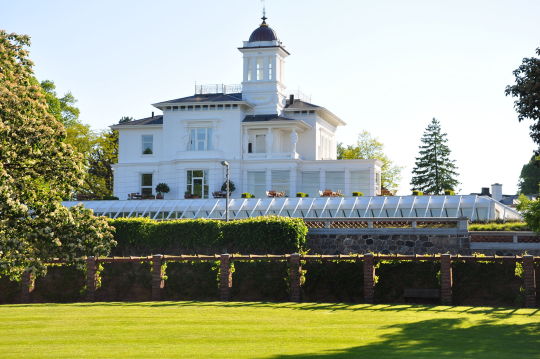
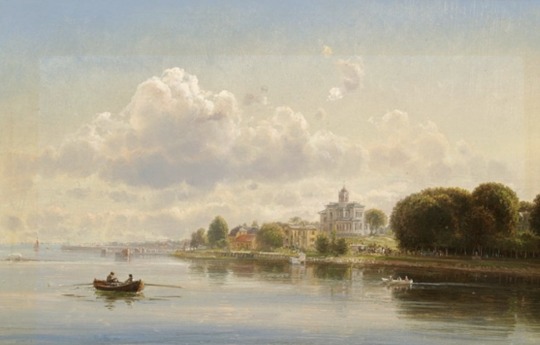
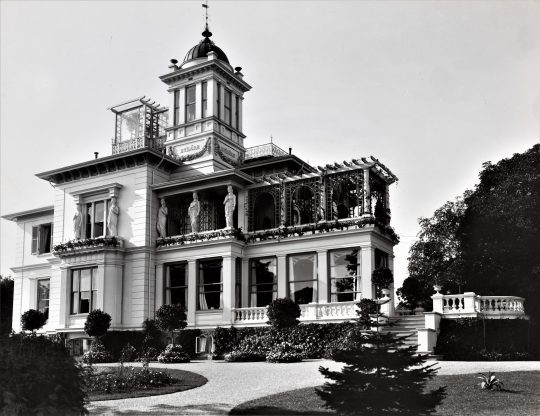
On the photographs: top left: Hvidøre House, present day, top right: A Summer's Day at Hvidøre, painting by Ferdinand Richardt; bottom Hvidøre House in 1920s
Hvidøre House - the last residence of Maria Feodorovna (Dagmar of Denmark).
The Hvidøre House was purchased in 1905 by Maria Feodorovna (26 November 1847 – 13 October 1928) and her sister, Alexandra of the UK, as their summer residence during their visits to Denmark. Until 1914, Maria Feodorovna and her sister spent every year from September to November in the Hvidøre House.
After the October revolution of 1917 in Russian, in April 1919 Maria Feodorovna immigrated first to the UK and then moved to Denmark, where in November 1919 she took residence in the Hvidøre House. Later, in 1920, she was joined by her daughter, Olga Alexandrovna, her daughter's husband Nikolai Kulikovsky, and their two children Tikhon and Guri.
In 1925, the residents of the Hvidøre House amounted to 24 people apart from the immediate mentioned above family the residents of the house were:
The lady-in waiting, Zinaida Mengden
Chambermaid, Cecilia “Kiki” Grunwald
Two other chambermaids: Martha Ozer and Emilia Tenzo
One wardrobe attendant, Olga Wassiliewa
One maid, Maria Iwanova
Life Cossacks: Yaschik and Poliakov
The waiter, Ivan Wiagis
Two danish kitchen maids: Alpha Ellen Margrethe Jensen and Maria Johanne Willers Nielsen
One Housemaid, Emilie Johanne
One Maid, Thora Elvira Munch
A married couple Andersen the husband being gardener Knud Emil and their maid Anne Kirstine
Maria Feodorovna lived in the Hvidøre House till her death in 1928.
Two years after her death in 1930, the Hvidøre House was sold by her daughters, Olga and Xenia.

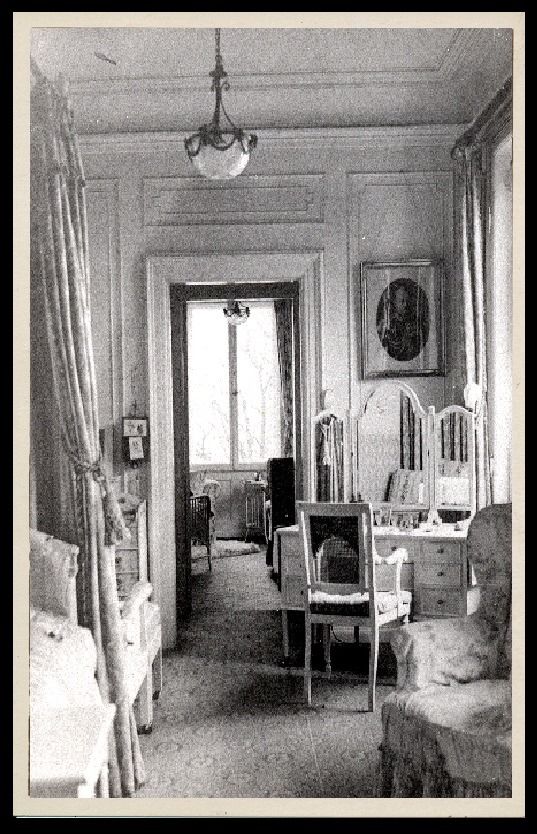



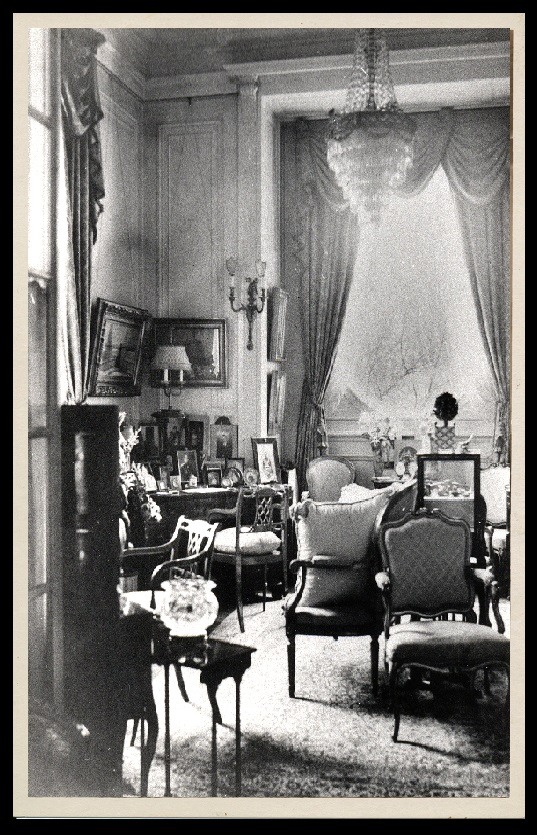
On the photographs: the interiors of the Hvidøre House.
#romanovs#research#investigation#nicolas ii#seraphima bogomolova#photographs#Denmark#Hvidøre House#Maria Feodorovna#1920s
8 notes
·
View notes
Text









Sisters Queen Alexandra of the United Kingdom and Dowager Empress Maria Feodorovna of Russia in the conservatory at Hvidøre House, their residence.
Following the death of their father, Christian IX of Denmark, they purchased Hvidøre House, a villa outside Copenhagen. After 1917, the Empress lived here permanently until her death in 1928.
These photographs were taken by Mary Steen in 1908, most take place in the conservatory, while others at the drawing room. The last photograph shows a meal in the dining room with the two sisters along with Princess Victoria, daughter of Queen Alexandra, and Grand Duke Michael Alexandrovich, son of Empress Marie. In some, you can see their dogs, probably Japanese Chins, moving or resting.
8 notes
·
View notes
Text
Who was Countess Lily Malevsky-Malevitch based on?




Translated from Danish to English via the app.
"Did you know...
The lady in court Lily Malevsky-Malevitch, played by Julie Steincke, is inspired by Cecilia Gustavovna Grünwald - also called Kiki - who until her death lived in a small apartment on Venøgade in Østerbro?
Kiki was Empress Maria Feodorovna's Maiden from 1890 until the Empress's death in Copenhagen in 1928. During the revolution, she followed the widowed empress through a Russia in chaos. From St. Petersburg to Livadia Palace in Crimea. From 1917-1919, they lived under house arrest while hearing about the persecution and murders of the Zar family and their officers.
In 1919, the Empress of Widow was persuaded to flee, first to England and then to Denmark, where she as the Danish-born princess Dagmar moved into Hvidøre Castle at Klampenborg with Kiki and her servants. After the death of the Empress, Kiki settled on Østerbro.
In Russia, Kiki was often called "the most powerful woman in the country". When the Czar couldn't receive the crowd seeking the audience, they turned to Kiki. She was able to convey their wishes to the Empress while she cut her hair. As a maid of honor, Kiki was also responsible for the Empress's wardrobe and jewels.
The musical Anastasia is inspired by the historical events and the film of the same name, in which the Empress of Widow and Lily have sought refuge in Paris.
A magnificent and epic adventure.
Danmarkspremiere 19. september."
Source: Det Ny Teater on IG
#this information was so cool#I didn't know this#in the animated movie#I thought Sophie was loosely based on a real person#Baroness Sophie Buxhoeveden who was a lady in waiting to Tsarina Alexandra#I never knew about Kiki#I still don't know why they changed the name from Sophie to Lily#Wouldn't it have made more sense to change it to Kiki?#anastasia#anastasia musical#anastasia the musical#musical#musical theater kid#broadway musicals#musical theater#lily#russian history#history#countess Lily#Lily malevsky malevich#land of yesterday#the countess and the common man
3 notes
·
View notes
Photo



Sergei Prokudin-Gorsky's colour photos of Denmark in 1908:
View from Hvidøre House in Klampenborg, north of Copenhagen.
Garden in Fredensborg Palace (Zealand).
Botanic Garden of the University of Copenhagen.
#history#photography#architecture#botany#gardening#danish architecture#denmark#zealand#copenhagen#hvidøre house#fredensborg palace#university of copenhagen#sergei prokudin-gorsky
8 notes
·
View notes
Photo

Queen Alexandra of the United Kingdom and Empress Maria Feodorovna of All the Russias
The sisters with their companion animals at Hvidøre House in Denmark.
Source: https://www.pinterest.com/pin/416020084299089922/
9 notes
·
View notes
Photo






Queen Alexandra with her sister the Dowager Empress Marie Feodorovna, Hvidøre House, circa 1908-11. (x)
The Italian villa is the home of Queen Alexandra and the Empress Marie, and the two sisters, who adore each other, are absolutely happy in each other’s society, and in the simplicity of the life they lead. They welcomed me with enthusiasm, kissed me, and were quite excited to have somebody to whom they could show their little house. In the sitting-room they share they both wanted to show me their special corners at the same time.
“Come and see my writing-table”, said the Empress, pulling me to her end of the room. “No”, cried Queen Alexandra gailey, pulling me in the opposite direction; “come and see my writing-table.” How we all laughed!
“This is my chair,” said the Empress, showing me one in her corner of the romm. “And this is my chair,” echoed the Queen, calling my attention to the favourite chair in her corner. I had to see everything and admire everything.
Infanta Eulalia of Spain, Court life from within.
502 notes
·
View notes
Text

Dowager Empress Marie Feodorovna of Russia and Queen Alexandra of the United Kingdom on the balcony of their estate Hvidøre in Denmark.
In February 1906 the two sisters bought the villa for DKK280 000 to use as a summer residence during their visits to Denmark.They commissioned Johannes Schrøder to adapt and modernize the house with modern conveniences such as central heating while the British firm Waring & Gillow was put in charge of most of the interior decorations. A tunnel was also dug to provide direct access to the beach, which belonged to Hvidøre but was separated from it by the coastal road.
In the years that followed, the sisters generally stayed at Hvidøre from September until November, but this came to an end with the outbreak of World War I in 1914.
After the overthrow of the monarchy in Russia in the 1917 Revolution,Dowager Empress Marie Feodorovna fled Russia and took up residency at Hvidøre until her death in 1928, together with her daughter and son-in-law, Grand Duchess Olga Alexandrovna and Nikolai Alexandrovich Kulikovsky, and their two children,Tikhon and Guri Nikolaevich Kulikovsky.
In 1930 Olga and her sister Xenia sold Hvidøre.
12 notes
·
View notes
Text
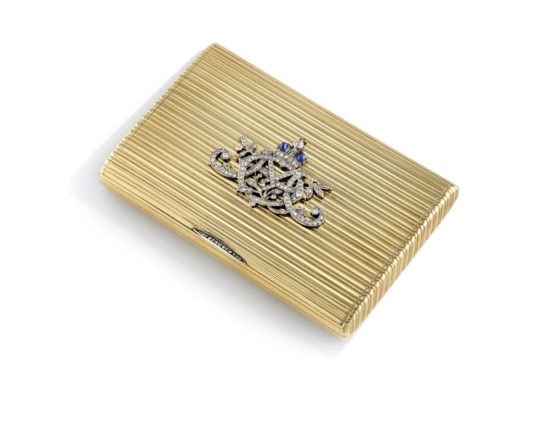
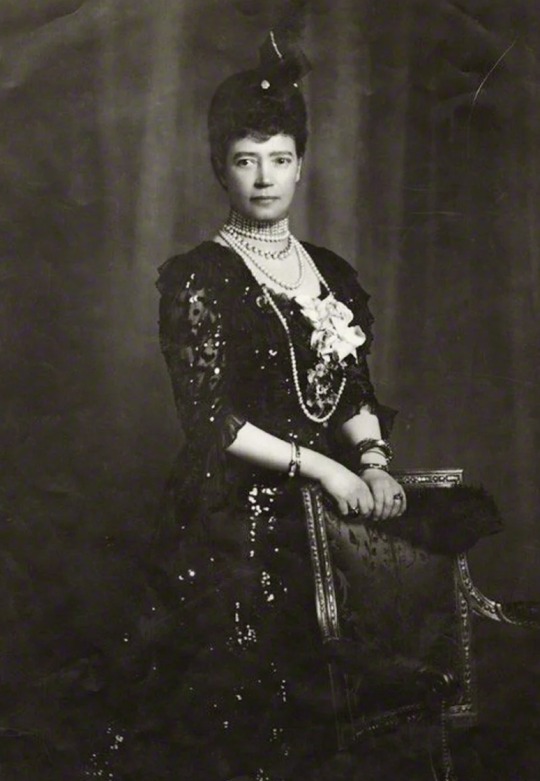
On the photograph: on the left, the Faberge diamond and gold cigarette case of Maria Feodorovna (Dagmar of Denmark) (26 November 1847 – 13 October 1928); on the right, Maria Feodorovna (Dagmar of Denmark).
The Faberge diamond and gold cigarette case of Maria Feodorovna will be presented at the Christies Magnificent Jewels Auction that will take place on 15 May 2024 in Geneva, Switzerland.
The current owner's family acquired the case in 1960s.
The estimate price: 20,000-30,000 CHF
Update on the sale: as of 15 May 2024 Christies Auction results, the cigarette case was not sold failing to reach estimated 20,000 CHF.
A speculation on whom might have sold the case to the current owner:
Maria Feodorovna from Russia to Denmark in April 1919 and took residence in the Hvidøre House that she and her sister Alexandra purchased in 1905 as a summer residence.
She lived there together with her daughter Olga Alexandrovna , her daughter's husband Nikoaly Kulikovsky, and their two sons, Tikhon and Guri, until her death in 1928.
Two years later, in 1930, Olga and her sister Xenia sold the Hvidøre House. Most likely, the cigarette case ended up with either Olga or Xenia. In 1948, Olga Alexandrovna immigrated to Canada. The case might have been with her. She died in 1960. Most likely either of her sons, Guri or Tikhon, sold the case to the current owner's family. However, the case might have ended up also with Xenia, the other daughter of Maria Feodorovna, who lived in England and also died in 1960. And it is one of her children who could have sold the case after her death. Either way, it appears that one of the grandchildren of Maria Feodorovna might have sold it in 1960s.

On the photograph: a page from the Christies catalogue - Magnificent Jewels for the Auction in Geneva on 15 May 2024.
#romanovs#research#investigation#nicolas ii#seraphima bogomolova#cigarette case#Christies#auction#geneva#Maria Feodorovna#Dagmar of Denmark#Faberge#May 2024
4 notes
·
View notes
Text

The Dowager Empress Marie Feodorovna of Russia at her firstly summer residence,which became her final residence ~ Hvidøre
Hvidøre is a former country house at Klampenborg, just south of Bellevue Beach, on the Øresund coast north of Copenhagen, Denmark. It is most known for serving as the home of Dowager Empress Marie Feodorovna of Russia, daughter of King Christian IX and mother of the last emperor of Russia, Nicholas II, after she was exiled by the Russian Revolution of 1917.
In February 1906, King Christian IX's daughters, Queen Alexandra of the United Kingdom and Dowager Empress Marie Feodorovna of Russia, acquired the building for DKK 280,000 to use it as a summer residence during their frequent visits to their native Denmark. They commissioned an aging Johan Schrøder to adapt and modernize the house with modern conveniences such as central heating while the British firm Waring & Gillow was put in charge of most of the interior decorations. A tunnel was also dug to provide direct access to the beach, which belonged to Hvidøre but was separated from it by the coastal road.
In the years that followed, the sisters generally stayed at Hvidøre from September until November, but this came to an end with the outbreak of World War I in 1914.
After the overthrow of the monarchy in Russia in the 1917 Revolution, Marie Feodorovna, known as Princess Dagmar of Denmark before her marriage, fled Russia and took up residency at Hvidøre until her death in 1928, together with her daughter and son-in-law, Grand Duchess Olga Alexandrovna and Nikolai Alexandrovich Kulikovsky, and their two children,Tikhon and Guri Nikolaevich Kulikovsky.
In 1930 Olga and her sister Xenia sold Hvidøre.
4 notes
·
View notes
Text

Dowager Empress Marie Feodorovna of Russia at Hvidøre.
In February 1906, Queen Alexandra of the United Kingdom and Dowager Empress Marie Feodorovna of Russia, acquired the building for DKK 280,000 to use it as a summer residence during their frequent visits to their native Denmark. They commissioned Johan Schrøder to adapt and modernize the house with modern conveniences such as central heating while the British firm Waring & Gillow was put in charge of most of the interior decorations.A tunnel was also dug to provide direct access to the beach, which belonged to Hvidøre but was separated from it by the coastal road.
In the years that followed, the sisters generally stayed at Hvidøre from September until November, but this came to an end with the outbreak of World War I in 1914.
After the overthrow of the monarchy in Russia in the 1917 Revolution,Dowager Empress Marie Feodorovna fled Russia and took up residency at Hvidøre until her death in 1928, together with her daughter and son-in-law, Grand Duchess Olga Alexandrovna Romanova of Russia and Nikolai Alexandrovich Kulikovsky, and their two children,Tikhon and Guri.
In 1930 Olga and her sister Xenia sold Hvidøre.
3 notes
·
View notes